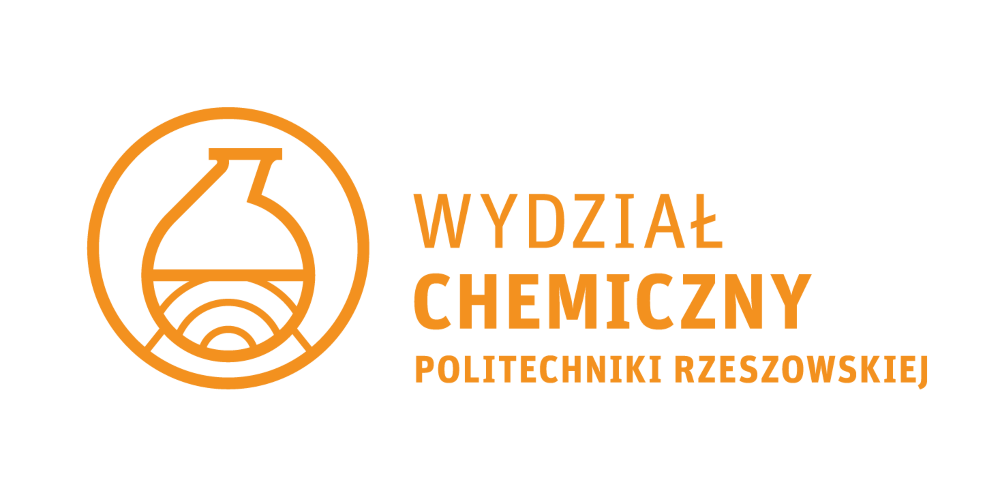

Fundamentals of programming
Some basic information about the module
The aim of studying and bibliography
The main aim of study:
Mastery of C + + language to the extent possible to solve tasks in chemical and process engineering.
The general information about the module:
The student becomes aware of the basics of programming in C + +.
Teaching materials:
Materiały dydaktyczne opublikowane na stronach portalu www.e-chemia.pl
Bibliography required to complete the module
| 1 | B. Dębska | Podstawy programowania : materiały pomocnicze | Oficyna wydawnicza Politechniki Rzeszowskiej, Rzeszów. | 2011 |
| 1 | J.Grębosz | Symfonia C++ | Oficyna Kallimach, Kraków. | 1999 |
| 2 | S.Prata | Język C++. Szkoła programowania | Wyd. Helion, Gliwice. | 2006 |
| 3 | R.Sokół | Wstęp do programowania w języku C++ | Wyd. Helion, Gliwice. | 2005 |
| 4 | E. Slavicek | Technika obliczeniowa dla chemików | WNT, Warszawa. | 1991 |
Basic requirements in category knowledge/skills/social competences
Formal requirements:
Required credit: mathematics
Basic requirements in category knowledge:
knows: rules of writing the complex arithmetic expressions, methods for solving mathematical equations, the concept of definite integral and approximate numerical methods for seeking of equations root
Basic requirements in category skills:
has the ability to verbal description of the steps of data processing in the chemical problem solving
Basic requirements in category social competences:
Ability to work individually and in a team of 2-3 persons.
Module outcomes
| MEK | The student who completed the module | Types of classes / teaching methods leading to achieving a given outcome of teaching | Methods of verifying every mentioned outcome of teaching | Relationships with KEK | Relationships with PRK |
|---|---|---|---|---|---|
| MEK01 | has a basic knowledge of the use of the programming environment and the principles of programming in C + +. | laboratory | practical pass, observation of the task performance |
K-U02+++ K-U19+ |
P6S-UU P6S-UW |
| MEK02 | has the ability to self-directed learning on the programming in C + + in order to solve problems in the field of chemical engineering. | laboratory, e-learning | practical pass, project presentation |
K-U02+++ K-U19+ |
P6S-UU P6S-UW |
| MEK03 | is able to build computer programs in C + + for design, calculations and other engineering tasks. | laboratory | observation of the task performance, practical pass |
K-U02+++ K-U19+ |
P6S-UU P6S-UW |
| MEK04 | can build, implement and test computational algorithms | laboratory, e-learning | practical pass, observation of the task performance |
K-U02+++ K-U19+ |
P6S-UU P6S-UW |
| MEK05 | can use mathematical knowledge and information technology to solve simple engineering tasks | laboratory | practical pass, observation of the task performance |
K-U02+++ K-U19+ |
P6S-UU P6S-UW |
The syllabus of the module
| Sem. | TK | The content | realized in | MEK |
|---|---|---|---|---|
| 3 | TK01 | L01-L06 | MEK01 MEK02 MEK03 | |
| 3 | TK02 | L07-L10 | MEK02 MEK03 MEK04 MEK05 |
The student's effort
| The type of classes | The work before classes | The participation in classes | The work after classes |
|---|---|---|---|
| Laboratory (sem. 3) | The preparation for a Laboratory:
5.00 hours/sem. The preparation for a test: 5.00 hours/sem. |
contact hours:
30.00 hours/sem. |
Finishing/Making the report:
5.00 hours/sem. |
| Advice (sem. 3) | The participation in Advice:
1.00 hours/sem. |
||
| Credit (sem. 3) | The preparation for a Credit:
5.00 hours/sem. |
The written credit:
1.00 hours/sem. |
The way of giving the component module grades and the final grade
| The type of classes | The way of giving the final grade |
|---|---|
| Laboratory | |
| The final grade | The final grade is equivalent to the laboratory evaluation OK = OL |
Sample problems
Required during the exam/when receiving the credit
(-)
Realized during classes/laboratories/projects
(-)
Others
(-)
Can a student use any teaching aids during the exam/when receiving the credit : no
The contents of the module are associated with the research profile yes
| 1 | L. Dobrowolski; K. Hęclik; B. Krzykowska; I. Zarzyka | Biokompozyt polimerowy na osnowie kwasu poli(3-hydroksymasłowego), sposób wytwarzania tego biokompozytu oraz jego zastosowanie | 2025 |
| 2 | A. Czerniecka-Kubicka; L. Dobrowolski; K. Hęclik; I. Zarzyka | Kompozyt polimerowy oraz sposób wytwarzania kompozytu polimerowego | 2024 |
| 3 | L. Dobrowolski; K. Hęclik; M. Jaromin; I. Zarzyka | A Practical Test of Distance Learning During the COVID-19 Lockdown | 2023 |
| 4 | M. Bakar; A. Białkowska; A. Czerniecka-Kubicka; L. Dobrowolski; K. Hęclik; B. Krzykowska; M. Longosz; I. Zarzyka | Polymer Biocompositions and Nanobiocomposites Based on P3HB with Polyurethane and Montmorillonite | 2023 |
| 5 | M. Chmiela; A. Czerniecka-Kubicka; L. Dobrowolski; W. Gonciarz; K. Hęclik; M. Longosz; A. Szyszkowska; D. Trzybiński; K. Woźniak; A. Wróbel; I. Zarzyka | Molecular Modeling of 3-chloro-3-phenylquinoline-2,4-dione, Crystal Structure and Cytotoxic Activity for developments in a potential new drug | 2023 |
| 6 | M. Bakar; A. Białkowska; A. Czerniecka-Kubicka; L. Dobrowolski; K. Hęclik; B. Krzykowska; I. Zarzyka | Biobased poly(3-hydroxybutyrate acid) composites with addition of aliphatic polyurethane based on polypropylene glycols | 2022 |
| 7 | M. Bakar; A. Białkowska; A. Czerniecka-Kubicka; L. Dobrowolski; K. Hęclik; K. Leś; M. Pyda; M. Walczak; I. Zarzyka | Thermally stable biopolymer composites based on poly(3-hydroxybutyrate) modified with linear aliphatic polyurethanes – preparation and properties | 2021 |
| 8 | A. Białkowska; L. Dobrowolski; L. Wianowski; I. Zarzyka | Physical blowing agents for polyurethanes | 2020 |
| 9 | A. Czerniecka-Kubicka; L. Dobrowolski; K. Hęclik; I. Zarzyka | Biodegradowalne kompozyty polimerowe na osnowie P3HB | 2020 |
| 10 | R. Bartosik; L. Dobrowolski; K. Hęclik; A. Klasek; A. Lycka; I. Zarzyka | New mono- and diesters with imidazoquinolinone ring- synthesis, structure characterization and molecular modeling | 2020 |